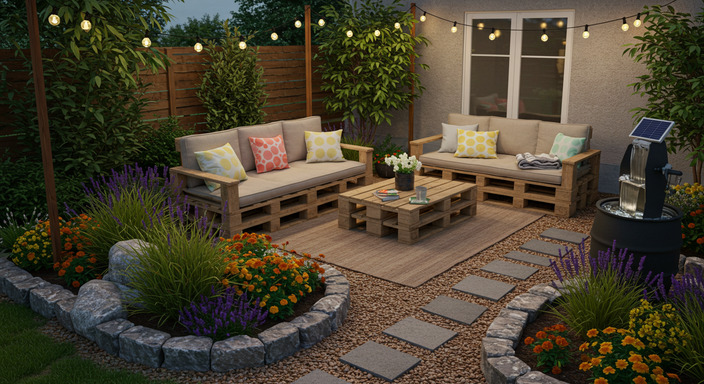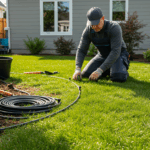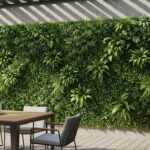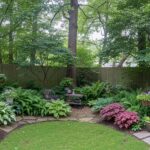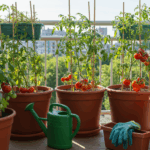Backyard Landscaping Ideas: Transforming Your Outdoor Space
Have you ever walked past a home with a stunning backyard and wondered how it was achieved? A backyard isn’t just an extension of your home; it’s a canvas where you can express creativity and design an environment that offers relaxation, entertainment, and a touch of nature. As homeowners search for ways to enhance their outdoor living spaces, backyard landscaping becomes a focal point of attention. In this article, we’ll delve into various ideas and strategies to transform your backyard into a personal paradise.
Understanding Your Space
The first step in landscaping is understanding the space you have to work with. Whether it’s a cozy urban yard or an expansive country garden, knowing the dimensions and conditions of your backyard is crucial. Consider the following factors: terrain, climate, and soil type. The terrain helps determine what elements can be incorporated — from water features to terraces. The climate influences the choice of plants, while the soil type can affect plant growth and overall design.
| Factor | Consideration | Impact |
|---|---|---|
| Terrain | Flat or sloped | Influences features and layout |
| Climate | Temperature and precipitation | Affects plant selection |
| Soil Type | Sandy, clay, loam | Determines plant success |
| Sunlight | Full sun, partial shade | Impacts plant health |
| Water Drainage | Flood-prone or dry | Design considerations for hardscaping |
Understanding these elements offers a foundation for a functional and aesthetically pleasing landscape design. For instance, sandy soil may require soil amendment for plant health, while a sloped terrain might need terraces to prevent erosion.
Choosing a Landscape Style
Once you have a grasp on your backyard’s characteristics, it’s time to choose a style that aligns with your home and personal preferences. Landscape styles can vary widely from formal and structured to casual and eclectic. A formal garden with symmetrical designs and carefully pruned hedges offers a classic and elegant look. In contrast, a cottage garden can provide a whimsical, unstructured vibe with a mix of colorful flowers and meandering paths.
If you prefer a modern style, incorporate clean lines, minimalist plantings, and monochromatic schemes. For those interested in sustainability, opt for a xeriscaping approach, which uses drought-tolerant plants to create a low-water beauty. Selecting a style sets the direction for all future landscaping decisions.
“Gardens are not made by singing ‘Oh, how beautiful!’ and sitting in the shade.” — Rudyard Kipling
Incorporating Water Features
Water features can bring relaxation and elegance to any backyard. The soothing sound of water can create a serene environment, masking noise pollution and attracting wildlife. Options range from simple birdbaths to intricate koi ponds or waterfalls. Fountains are versatile choices that come in various styles, suiting both small and large spaces alike.
When planning a water feature, consider its purpose. Are you aiming for a focal point that draws attention, or do you prefer a subtle addition that blends with the surroundings? Maintenance is also a key factor — ponds, for example, may require regular care to maintain water quality and fish health. The placement of water features is crucial; ideally, they should be situated in a location where they can be easily enjoyed from both inside and outside the home.
Using Hardscaping for Structure
Hardscaping refers to the use of hard materials like stone, wood, and concrete in landscaping. These elements can add structure and functionality to your backyard. Paths, patios, and retaining walls are common hardscape features that define space and create usable areas. Choose materials that harmonize with the style of your house and the intended landscape design. Natural stone offers a rustic charm, while stamped concrete can be customized to mimic various textures and patterns.
1. Paths: Define walkways that guide visitors through your garden.
2. Patios: Provide a space for seating and outdoor dining.
3. Walls: Offer both aesthetic appeal and functional fencing or terracing.
4. Decks: Extend living space and offer a vantage point for viewing the garden.
Appropriate hardscaping enhances usability and complements the softer garden elements.
Plant Selection and Arrangement
Selecting the right plants is pivotal to creating a thriving backyard garden. This involves considering color schemes, bloom time, and maintenance needs. Opt for a variety of textures and heights to create visual interest. Plant perennials for long-lasting beauty, and mix in annuals for seasonal color. Shrubs and trees can offer structure and shade, while ground covers help reduce weeds and stabilize soil.
When arranging plants, consider layering — use taller plants at the back of borders, moving to shorter varieties at the front. Group plants with similar water and light requirements together. Consider a focal plant or tree to anchor a garden section. This approach ensures a harmonious and sustainable landscape.
Enhancing Privacy
Privacy is a vital aspect of backyard enjoyment, whether it’s for personal time or hosting gatherings. There are various ways to enhance privacy without compromising on aesthetics. Planting hedges or tall shrubs along property lines offers a natural barrier. Meanwhile, trellises with climbing plants can serve as vertical barriers while adding greenery.
Consider pergolas or gazebos for shaded privacy, which can also provide space for vines to grow. These structures can be placed strategically to obstruct lines of sight from neighboring properties, enhancing the seclusion of specific garden areas.
Lighting for Ambiance and Safety
Lighting allows you to enjoy your backyard after dusk and ensures safety. Solar lights are an eco-friendly option, ideal for illuminating pathways and garden features. String lights can create a festive ambiance for patio spaces, while LED spotlights highlight architectural or plant features.
Layered lighting — combining ambient, task, and accent lights — can transform your backyard into a functional space long after the sun sets. Ensure that safety is also a priority; steps and uneven paths should be well-lit to prevent accidents.
Integrating Sustainable Practices
Sustainability in landscaping is increasingly important for eco-conscious homeowners. Incorporate practices that conserve resources and promote ecological health. Native plants require less water and support local biodiversity. Installing drip irrigation systems minimizes water waste by delivering water directly to plant roots.
Composting kitchen and garden waste reduces landfill contributions and enriches soil health. Consider rainwater harvesting systems as an alternative water source. Sustainable landscaping not only benefits the environment but can also reduce maintenance demands and costs.
FAQ – Dúvidas Comuns
What are the first steps in backyard landscaping?
Start by assessing your space: its size, climate, soil type, and shade patterns. From there, define your goals, whether it’s creating a relaxing oasis or a space for entertaining.
How do I choose plants for my backyard?
Select plants based on your climate, soil, and sunlight conditions. Incorporate a variety of textures and colors, and consider maintenance needs when planning your garden.
What are some low-maintenance landscaping options?
Xeriscaping with drought-tolerant plants, using mulches to reduce weeds, and incorporating native plants are excellent strategies for a low-maintenance garden.
How do I incorporate a water feature into my garden?
Consider the size of your space and maintenance capacity. Options vary from birdbaths and fountains to ponds and flowing water walls.
What should I include in a small backyard?
Focus on multifunctional elements. Vertical gardens, compact seating areas, and strategic lighting can maximize space efficiently.
Conclusion
Transforming your backyard through landscaping is an art that blends creativity with practicality. By understanding your space, selecting the right plants, and integrating features like water elements and hardscaping, you can create a personalized retreat that enhances your home and provides endless enjoyment. Whether you aim for sustainability, modern elegance, or a cozy cottage feel, the possibilities are as vast and varied as your imagination permits. Embrace the journey of backyard landscaping and make your outdoor space a reflection of your style and preferences.
Meta Descrição: Discover creative backyard landscaping ideas to transform your outdoor space with style, sustainability, and functionality.

